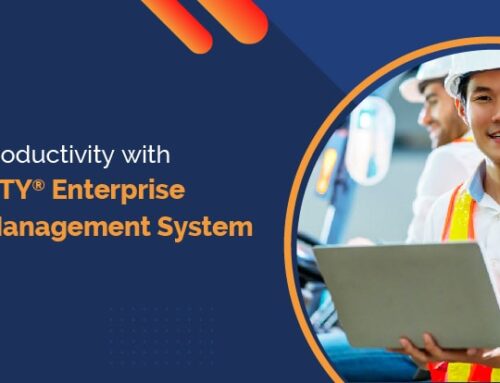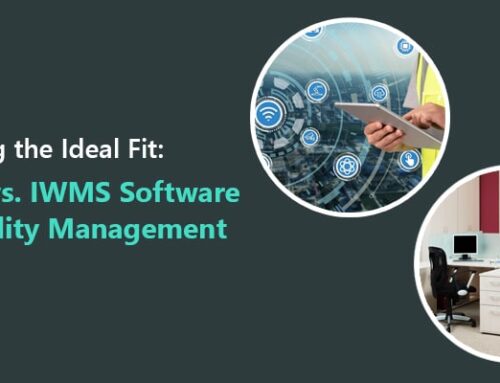The past three years have been tumultuous for all in the workplace; business leaders and employees were equally affected by the ravaging effects of COVID-19. Today, with things limping back to normal slowly, one thing stands out crystal clear: 2023 will evolve as the year of humanity and human-centric design.
Employees have started pondering their daily tasks and asking questions like “Where is my work leading me?” Am I in line with the company’s vision and goals? Does my employer care and support me when it comes to work-life balance? Do my managers realize my true worth?
Here are the four best ways to maintain a human-centric workplace in 2023:
An organization is good because its people are good, and to continue to retain the best talents and attract more top talent, leaders must make work enjoyable and work for all.
1. Is a Four-day Workweek feasible?
Ideas and opinions may vary. Did you know that in the US, a six-day week was the norm until Henry Ford changed it by triggering a 5-day workweek? Over time, the practice has spread to all industries in the US. Today, the scenario is quite different, with most employees wanting further reduction – just four days of work a week. Most of them feel they can complete the week’s tasks in four days and would like to shave off an extra workday.
Although it may sound premature for a country like India (we did move from 6 to 5), the idea seems to be gaining ground in the US. The situation prompted Andrew Barnes and Charlotte Lockhart to start the not-for-profit business coalition 4 Day Week Global after putting their successful businesses on autopilot. It is a not-for-profit supporting like-minded entrepreneurs globally who champion a four-day workweek.
The concept has its merits. 4 Day Week Global found the four-day week more beneficial when compared to the five-day week since 63% of businesses adopting this new norm found it easy to attract and retain top talent. It is not surprising that 78% of the employees working four days a week seem happy and less stressed.
Some additional benefits for employers:
- Provides Flexibility to Employees
- Makes Employees Happier
- Helps Reduce Business Expenses
- Helps Increase Productivity
- Prevents Wasting Work Hours
The not-for-profit further recommends two such four-week models. The first may not be feasible for all – closing the entire organization continuously for 72 hours. The other is more employee-and-employer-friendly: called the flex four-day week, this allows the employees to choose which 4 days of the week they wish to work.
2. Employees’ Well-Being Remains an all-important Factor
The primary concern of employers today is the risk of employee burnout, which was alarmingly high at 59% among American workers in 2022, an increase from 52% in 2021. Closer home, the figures are not very encouraging, with every 4 in 10 workers showing tell-tale signs of burnout, distress, and anxiety. All this indicates that 2023 calls for a greater focus on the mental health and well-being of the employees.
The need of the hour is a human-centered workplace with a healthy and safe atmosphere focusing on employee health and well-being. For example, eFACiLiTY® has developed the workplace health and well-being app, which it uses to promote the health and well-being of its employees. Also, it is the first software company in India to comply with WELL rating system guidelines to promote employee well-being.
The prevailing economic scenario and tech layoffs in the software industry, in general, indicate the need for employers to maintain workplace support for employees and have their health and well-being high on their agenda.
Here are some effective ways to enhance employee well-being:
Include recognition and praise as a way of your company culture
A recognition program does not cost a bomb to implement. When you award employees for their hard work and sincere efforts and recognize their achievements, they develop a sense of ownership, belonging, and pride. People like to know that their hard work and achievements never go unnoticed. A Harvard Business Review research article states that recognition often provides a morale boost to employees. A company that promotes a supportive workplace with a recognition-rich culture is sure to succeed in retaining the top talent in the industry.
Keep Throwing Fitness Challenges
If an ordinary quiz can galvanize employees into action, imagine what will happen if you throw a fitness challenge in the form of a fun and friendly competition. Making all the employees participate in such activities creates a sense of participation and friendly competition between teams. Fitness challenges can be easy and simple, like a walking challenge, a test of endurance, which is good for mental health and well-being. Implementing a Physical Activity Tracker provides complete visibility into their health/lifestyle, and the leaderboard encourages employees to benchmark/compete with their peers towards a healthier lifestyle.
Organize Monthly Virtual Wellness Workshops
It is an excellent idea to organize monthly virtual wellness workshops. And you can have an expert conduct these workshops where critical issues like stress, burnout, mental health, and nutrition can be discussed in detail. It can be a non-mandatory workshop that employees can join out of personal interest, and for bettering their health and well-being.
Introduce Flexible Work Hours to Promote Work-Life Balance
Besides working for you, your employees have other important things to do. They must spend time with their family and community, indulge in their favorite hobbies, etc. to make life more fulfilling. If your employees have the luxury of flexible hours, they spend the same expected time working, but at their convenience, which adds to their productivity. Allowing flexible hours lets your employees adjust their work habits to accommodate other personal needs.
If you have employees working from home, eFACiLiTY® Project Management System’s activity tracker and timesheet monitoring system will help your managers track their activity. And as they will be following flexible work hours, it is easier to process their payrolls based on time logged, which is captured in timesheet tracking.
Support Skill Development
In a highly competitive job market, it is essential to spend time and effort on your employees’ professional growth. Mentorship and skills and training management help with employee retention. You can also attract top talent in the industry if they know that you provide such support in your organization. The eFACiLiTY® Skills and Training Management System helps managers identify skill gaps and assess training needs for employees.
Win Employees’ Trust by Encouraging them to take Paid Time Off
Before the pandemic, employees were probably hesitant to use their paid time off as they may not have had the real need to take time off. However, the pandemic changed everything, and companies also are creating a culture where paid time off is encouraged and promoted. Managers must encourage their team members to use up their paid time off on a vacation and come back rejuvenated.
3. Hybrid is the Preferred way with Most Employers
The last three years have been a period of trial and error with several work models, and there’s universal agreement on the Hybrid model, which has evolved as the most preferred when compared to the work-from-home and in-office models. With hot-desking becoming one of the hottest favorites, employees can choose the date, time, and desk location using apps installed on their mobile phones.
Undoubtedly the remote model offers greater flexibility; however, employees miss meeting their peers face-to-face, and a hybrid model provides the perfect solution. Employees enjoy the flexibility they desire while at home and get to spend some quality time while working in-office, creating a perfect balance. While working from home is a great benefit most workers prefer, on-site offers a chance to collaborate with colleagues through teamwork.
Mark Dixon, the founder of IWG, the global leader in hybrid working, believes that employees working under a hybrid model enjoy privacy while working at home, and benefit from collaborating with their peers while working on-site. Moreover, hybrid work is one of the best ways of supporting employees in the workplace that helps cut costs, and boosts productivity and employee retention.
Some benefits of a hybrid work model briefly:
- Employees have the luxury of choosing their location and timings and can plan their days accordingly.
- A fixed hybrid model spells out the days and times employees must work remotely and in-office.
- Some models work on an office-first plan, and employees need to be in the office, with the flexibility to choose any two days in the week to work remotely.
- Some models work on a remote-first plan, allowing employees to work remotely daily, with once-a-month office visits to catch up.
The hybrid model is one of the most preferred today, and suits and benefits all. It creates a win-win situation where employers can see reduced office expenses with a marked increase in productivity. Employees are happy with the work-life balance a hybrid model offers, leading to mental well-being. Caregivers get a chance to serve their loved ones better without compromising on their work. The eFACiLiTY® space management system features hot-desking that helps in implementing on-demand seat booking of shared workspaces.
4. Pay Transparency is gaining Momentum
The Great Resignation started before the pandemic, but COVID spurred it through 2021. A whopping 47 million Americans quit their jobs, with workforce shortages affecting every industry, big and small. It also brought along pay transparency, which continues to gather momentum in 2023.
A person may seek an internal job posting (IJP) or seek employment in a new company. Whatever the case, people are concerned about what salary the new position offers, and whether it will be enough to cover their basic needs. It has become crucial for companies to display the pay range, leaving little scope for interpretation.
In the US, 20% of the workers are protected by pay transparency laws, and companies need to have a “good faith” salary range on each job listing. India and the UK are still far behind, though the UK has a pilot pay transparency initiative encouraging businesses to mention the salaries with their job listings.
However, some companies are still reluctant to mention their salary ranges publicly and do not speak about increments based on merit. But a highly competitive job market is convincing employers to take another closer look at showing more clarity about the compensation they offer.
Conclusion
2023 should focus on a people-centric workplace, because a human-centric strategy helps prioritize the employees. The last three years have been a testing time for employers. Handling remote, in-office, hybrid, an unexpectedly high number of resignations, and economic uncertainty have all contributed to shifting from office-centric to employee-centric workplace.
Research studies conducted by Gartner indicate that a human-centric work model boosts employee happiness. And a happy employee is more enthusiastic about work.













